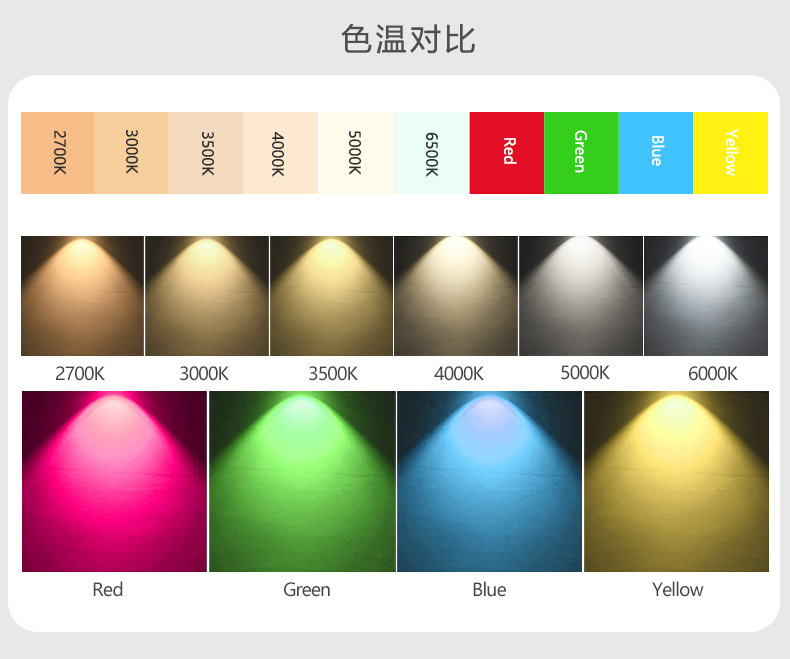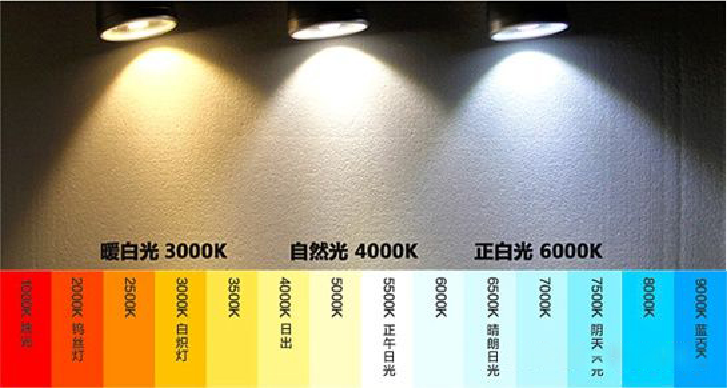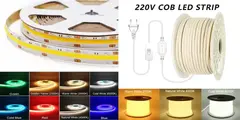The Optimal Applications of LED Strip Light Color Temperatures Across Different Environments
Introduction
LED strip lights have become one of the most versatile and energy-efficient lighting solutions across both residential and commercial environments. A key feature that makes them highly adaptable is the availability of different color temperatures, typically measured in Kelvin (K). Color temperature not only determines the visual tone of light—ranging from warm yellow to cool blue—but also influences mood, functionality, and aesthetics within a given space.
Understanding the optimal use of different color temperatures in specific applications is crucial for architects, lighting designers, and B2B buyers who aim to create environments that are both visually appealing and functional. This article explores the technical aspects of LED strip light color temperatures, provides practical guidance for application in various scenarios, and highlights industry best practices for selection and installation.

1. Understanding LED Color Temperature
Color temperature refers to the perceived warmth or coolness of light, expressed in Kelvin (K). Lower Kelvin values (2700K–3000K) produce a warm, yellowish glow similar to incandescent bulbs, while higher values (5000K–6500K) produce cooler, bluish-white light resembling daylight.
-
Warm White (2700K–3000K): Creates a cozy, intimate atmosphere.
-
Neutral White (3500K–4000K): Balanced tone, suitable for both residential and commercial settings.
-
Cool White (5000K–6500K): Bright, crisp, and energizing, ideal for task lighting and industrial spaces.
2. Warm White LED Strip Lights (2700K–3000K)
Warm white lighting is often associated with comfort and relaxation, making it particularly effective in spaces designed for leisure or hospitality.
Best Applications:
-
Residential Living Areas
-
Living rooms, bedrooms, and dining areas benefit from warm white strips, as the softer tone reduces eye strain and fosters relaxation.
-
Ideal for accent lighting under shelves, coves, or behind furniture to add a sense of depth.
-
-
Hospitality Environments
-
Restaurants and cafés often use warm white strips to create a welcoming, intimate atmosphere.
-
Hotels frequently install them in lobbies and guest rooms to enhance comfort.
-
-
Retail Stores (High-End Fashion and Jewelry)
-
Warm white enhances product appeal, particularly for wood, leather, or gold-toned products.
-
Creates a premium and luxurious impression.
-
Technical Considerations:
-
Choose CRI (Color Rendering Index) above 90 to maintain accurate color representation.
-
Use dimmable strips to adjust brightness for mood lighting.
3. Neutral White LED Strip Lights (3500K–4000K)
Neutral white strikes a balance between warm and cool tones, making it one of the most versatile options for mixed-use environments.
Best Applications:
-
Offices and Workspaces
-
Promotes concentration without causing fatigue.
-
Suitable for open-plan offices, meeting rooms, and co-working spaces.
-
-
Healthcare Facilities
-
Neutral white creates a clean, professional look while avoiding the harshness of cool white.
-
Commonly used in waiting rooms and examination rooms.
-
-
Retail Stores (General Merchandise)
-
Neutral white ensures accurate product display across categories.
-
Ideal for grocery stores, electronics shops, and bookshops.
-
Technical Considerations:
-
Balance between comfort and visibility makes this CCT ideal for general-purpose lighting.
-
Often paired with sensors or smart controls for energy efficiency in commercial buildings.
4. Cool White LED Strip Lights (5000K–6500K)
Cool white lighting is crisp and energizing, making it ideal for task-oriented or high-visibility environments.
Best Applications:
-
Industrial and Manufacturing Facilities
-
Ensures maximum visibility for detailed tasks and machine operations.
-
Reduces errors and enhances safety.
-
-
Commercial Kitchens
-
Bright, clean lighting ensures food preparation areas remain hygienic and efficient.
-
-
Retail (Electronics and Technology Stores)
-
Cool white lighting emphasizes sleek, modern designs and highlights reflective surfaces.
-
-
Outdoor Applications
-
Used for security lighting, signage, and architectural facades where brightness and clarity are priorities.
-
Technical Considerations:
-
Opt for higher lumen output per meter for environments requiring bright illumination.
-
Ensure proper heat dissipation since higher-output strips generate more heat.
5. Tunable White LED Strips (2700K–6500K)
Tunable white strips provide dynamic control over color temperature, allowing users to shift from warm to cool white depending on the environment or time of day.
Best Applications:
-
Smart Homes
-
Users can adjust lighting for relaxation (warm) or productivity (cool).
-
Often integrated with voice assistants or mobile apps.
-
-
Corporate Offices
-
Supports circadian lighting strategies, aligning indoor lighting with natural daylight cycles to boost employee productivity.
-
-
Event Venues
-
Enables quick adaptation to different event types, from conferences (cool) to gala dinners (warm).
-
Technical Considerations:
-
Requires specialized controllers for smooth dimming and color temperature transitions.
-
Best paired with DMX or DALI systems in large-scale commercial projects.
6. Matching Color Temperature with Material and Design Elements
The effect of LED strip lighting is influenced not only by the CCT but also by surrounding materials and finishes.
-
Warm Tones (Wood, Leather, Earthy Colors): Pair with warm white to enhance natural richness.
-
Neutral Tones (Concrete, White Walls, Minimalist Designs): Work best with neutral white for balance.
-
Cool Tones (Glass, Metal, Modern Architecture): Pair with cool white for a sleek, futuristic feel.
7. Practical Tips for Choosing LED Strip Color Temperature
-
Define the Purpose of the Space – Relaxation vs. productivity vs. visibility.
-
Consider User Comfort – Overly cool lighting in residential settings can feel harsh, while overly warm tones may reduce alertness in workspaces.
-
Use Layered Lighting – Combine strip lights with downlights or pendants for flexibility.
-
Factor in Lumen Output – Higher CCTs often appear brighter, but actual lumens should meet the required lux levels.
-
Test Before Installation – Use samples in the actual environment to confirm the best match.

LED strip lights provide unmatched flexibility in creating tailored lighting solutions across diverse environments. By understanding the characteristics of different color temperatures, businesses and designers can make informed choices that enhance both functionality and aesthetics.
-
Warm White (2700K–3000K): Best for hospitality, living areas, and luxury retail.
-
Neutral White (3500K–4000K): Ideal for offices, healthcare, and general retail.
-
Cool White (5000K–6500K): Optimal for industrial, commercial kitchens, and high-visibility outdoor spaces.
-
Tunable White: Provides adaptive flexibility for modern smart environments.
Ultimately, the right selection of LED strip light color temperature transforms not only the look of a space but also the experience within it. For B2B buyers, understanding these nuances ensures delivering solutions that align with client expectations and long-term usability.






